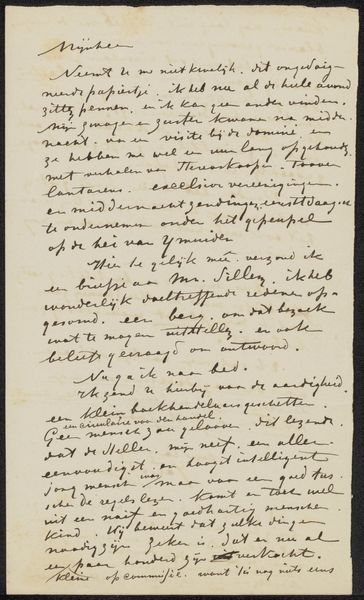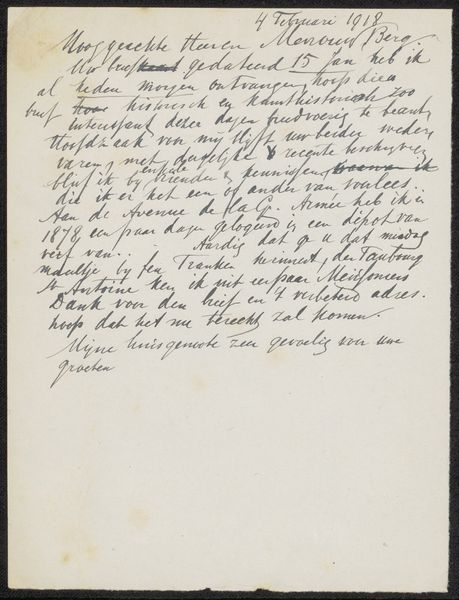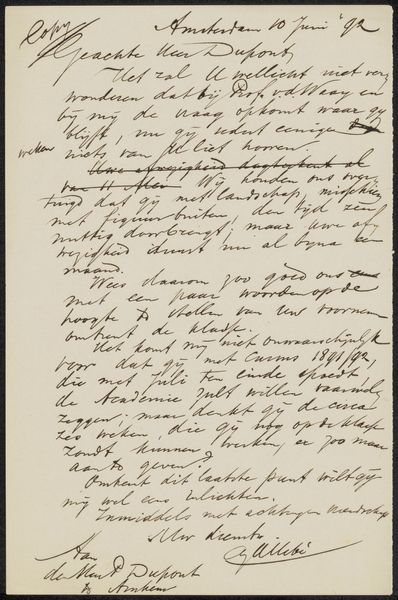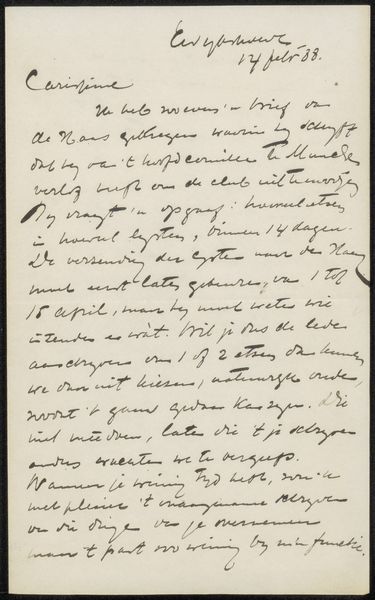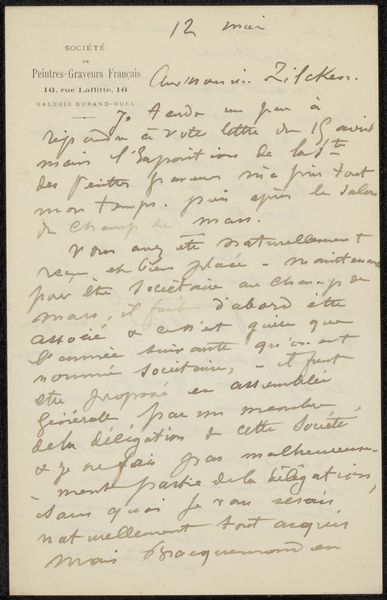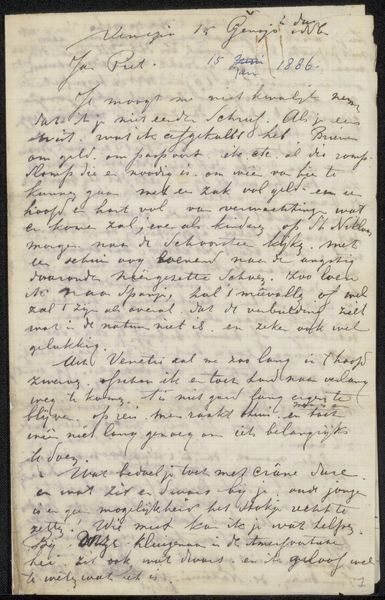
drawing, mixed-media, paper, ink, pen
#
drawing
#
comic strip sketch
#
mixed-media
#
pen sketch
#
hand drawn type
#
paper
#
personal sketchbook
#
ink
#
hand-drawn typeface
#
ink drawing experimentation
#
intimism
#
pen-ink sketch
#
pen work
#
sketchbook drawing
#
pen
#
sketchbook art
Copyright: Rijks Museum: Open Domain
Editor: We're looking at "Brief aan Etha Fles," or "Letter to Etha Fles," likely from 1895, by Jan Veth, in the Rijksmuseum. It's a mixed-media piece, with ink and pen on paper. My first impression is that this feels very personal, almost like peeking into someone's diary. What do you see in this piece? Curator: Indeed, a potent glimpse! The handwritten text, the artist’s personal script, takes on the role of visual symbol. Letters, over time, represent intimacy and communication. Think about how cultures historically guarded personal correspondence. This isn't just a message; it's a coded space revealing something about Veth's relationship with Etha Fles. Do you feel that sense of guardedness in the handwriting itself? Editor: I do, actually. It’s neat but also seems rushed, as though he’s trying to capture something fleeting. It's not calligraphy, it is really more like a private language. Curator: Precisely! And what does the act of sketching out a letter, rather than simply writing it, suggest to you about Veth's intent? He’s turning something temporal into something permanent. Editor: It suggests a desire for lasting connection. By making it art, he elevates the message. And I wonder, what kind of impact did showing collections in museums, as indicated at the end of the letter, had on artistic practice? Curator: Museums sanctified certain narratives. Being included elevated an artist's status and cemented their place in cultural memory. It suggests Veth understood his worth and the importance of having his works enshrined within this institution, further weaving his personal story into a broader cultural fabric. This piece helps me remember the importance of intimacy. Editor: I agree; this makes me wonder about the many private languages embedded in art all around us!
Comments
No comments
Be the first to comment and join the conversation on the ultimate creative platform.
